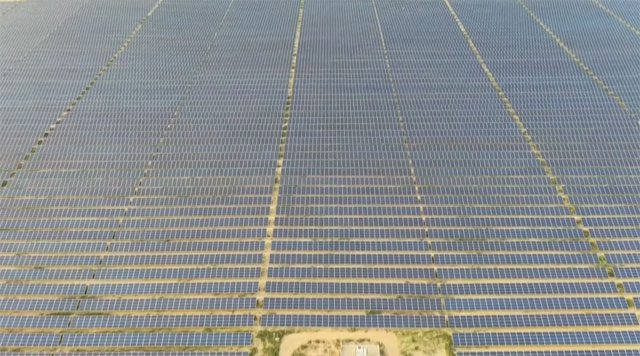Once a vast desert, Bhadla Park in Rajasthan has transformed dramatically thanks to millions of solar panels.
Bhadla Solar Park in the Thar Desert of India. (Video: AFP)
Rajasthan, located in western India, is the largest state by area but has a very sparse population due to most of its territory being a barren desert with an average of 325 sunny days each year. However, authorities have turned this harsh condition into an advantage for the country’s solar revolution.
Today, approximately 10 million solar panels have been installed at the edge of the Thar Desert, creating an oasis – Bhadla Park – that stretches as far as the eye can see. This is one of the largest solar parks in the world, demonstrating how technology, innovation, and public and private finance can bring about rapid changes.
India, with a population of 1.3 billion, is projected to soon surpass China to become the most populous country in the world, which means an increasing demand for energy. Currently, coal-fired electricity accounts for up to 70% of the country’s power generation, making it one of the top greenhouse gas emitters.

Approximately 10 million solar panels have been installed at the edge of the Thar Desert.
Although green energy in India has increased fivefold in just over a decade, reaching 100 GW this year, the sector still needs to grow further to meet climate change targets.
At the ongoing COP26 conference in Glasgow, Prime Minister Narendra Modi pledged that India would increase its non-fossil fuel energy capacity to 500 GW, and by 2030, 50% of the country’s energy needs will come from renewable sources such as wind and solar power.
“I believe this is an ambitious target to show the world that we are on the right track,” said Vinay Rustagi, an expert from India’s renewable energy consulting firm Bridge, to AFP.
According to the International Energy Agency (IEA), over the next two decades, India must add a power system equivalent to that of Europe to meet the needs of its growing population.
However, reshaping the entire power grid requires significant time and money. Currently, around 80% of India’s solar panels are still imported from China, the world’s largest manufacturer. In his speech at COP26, Prime Minister Modi expressed hope that developed nations would provide the necessary financial support for India to achieve its goals.



















































